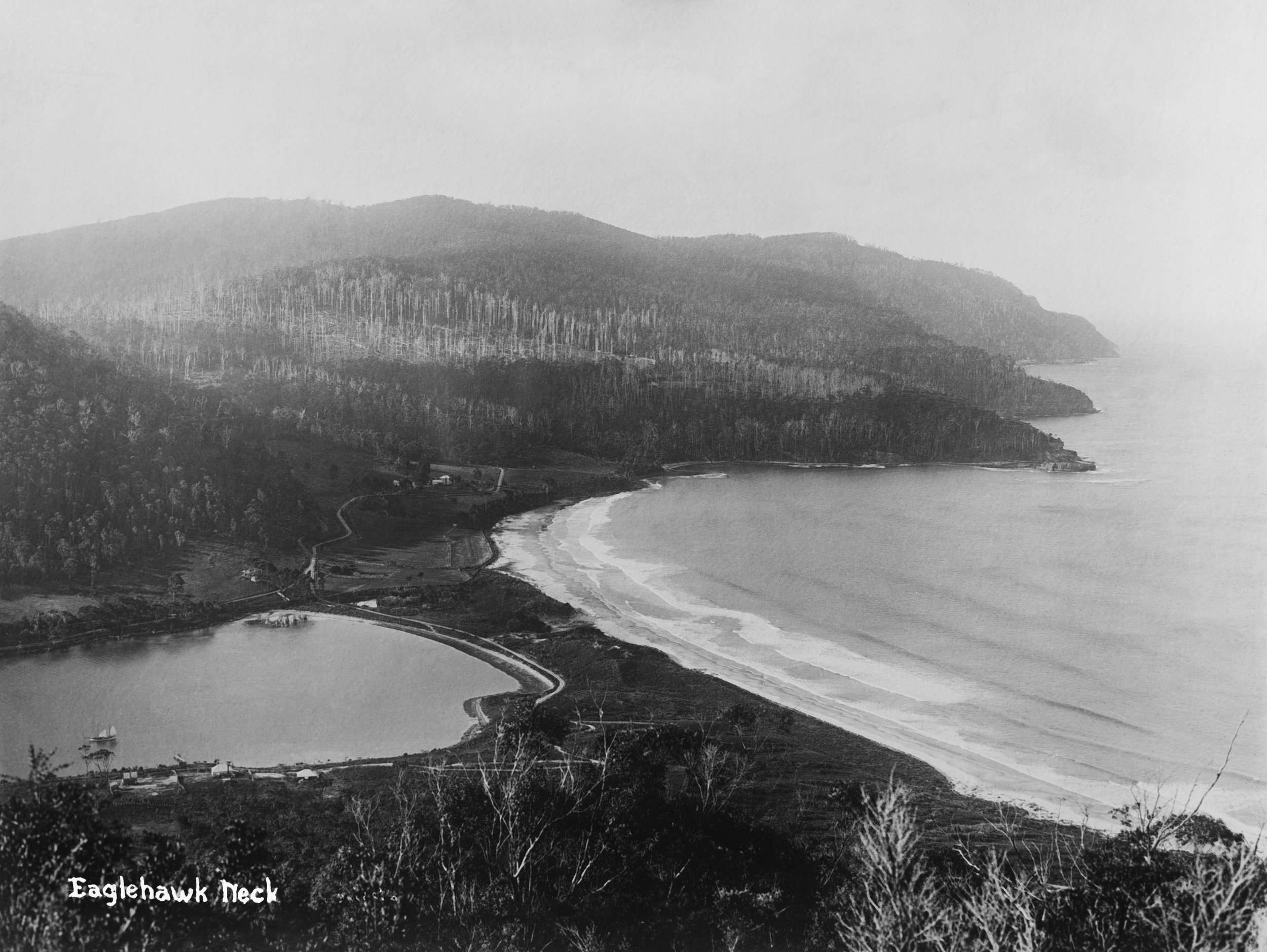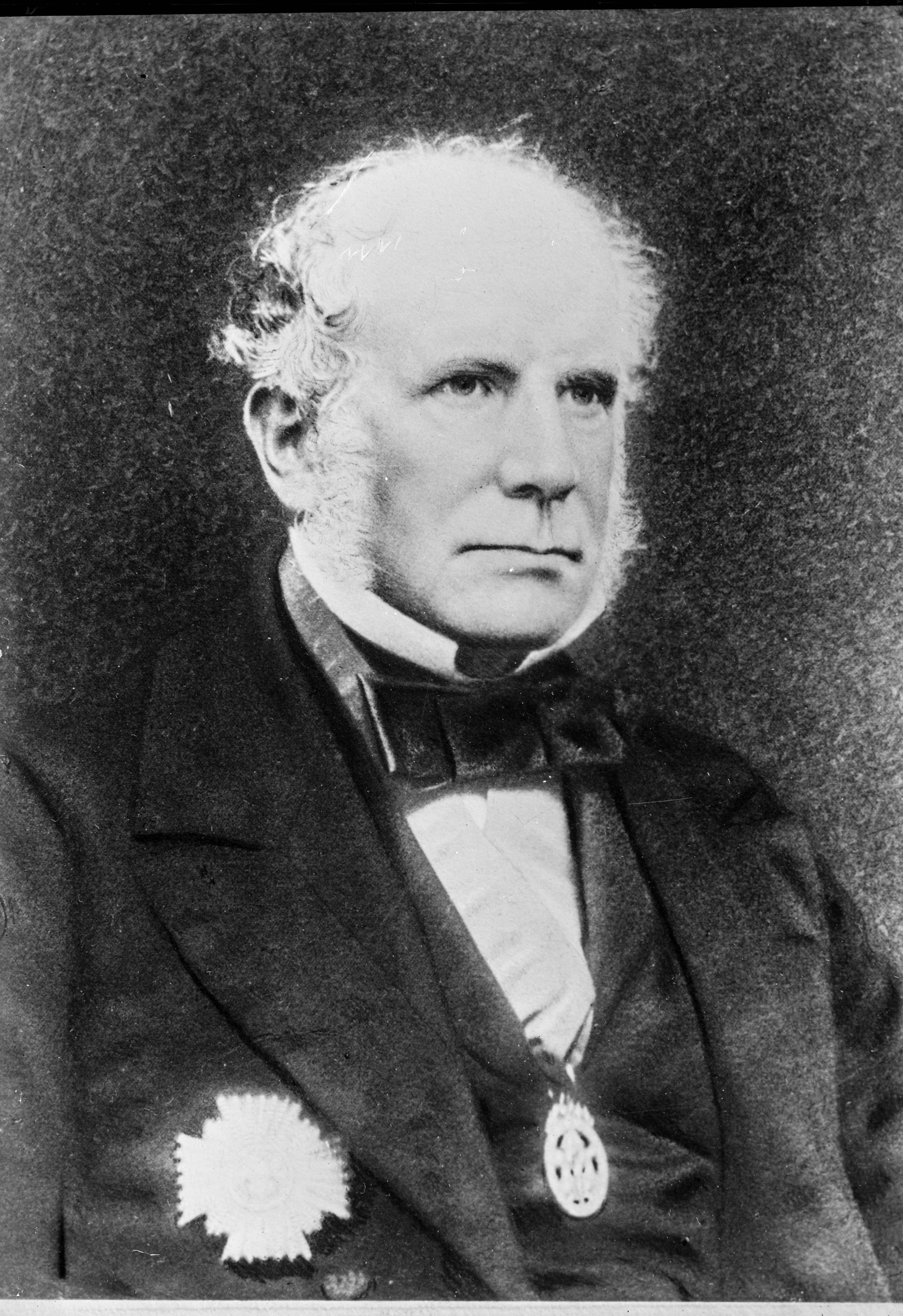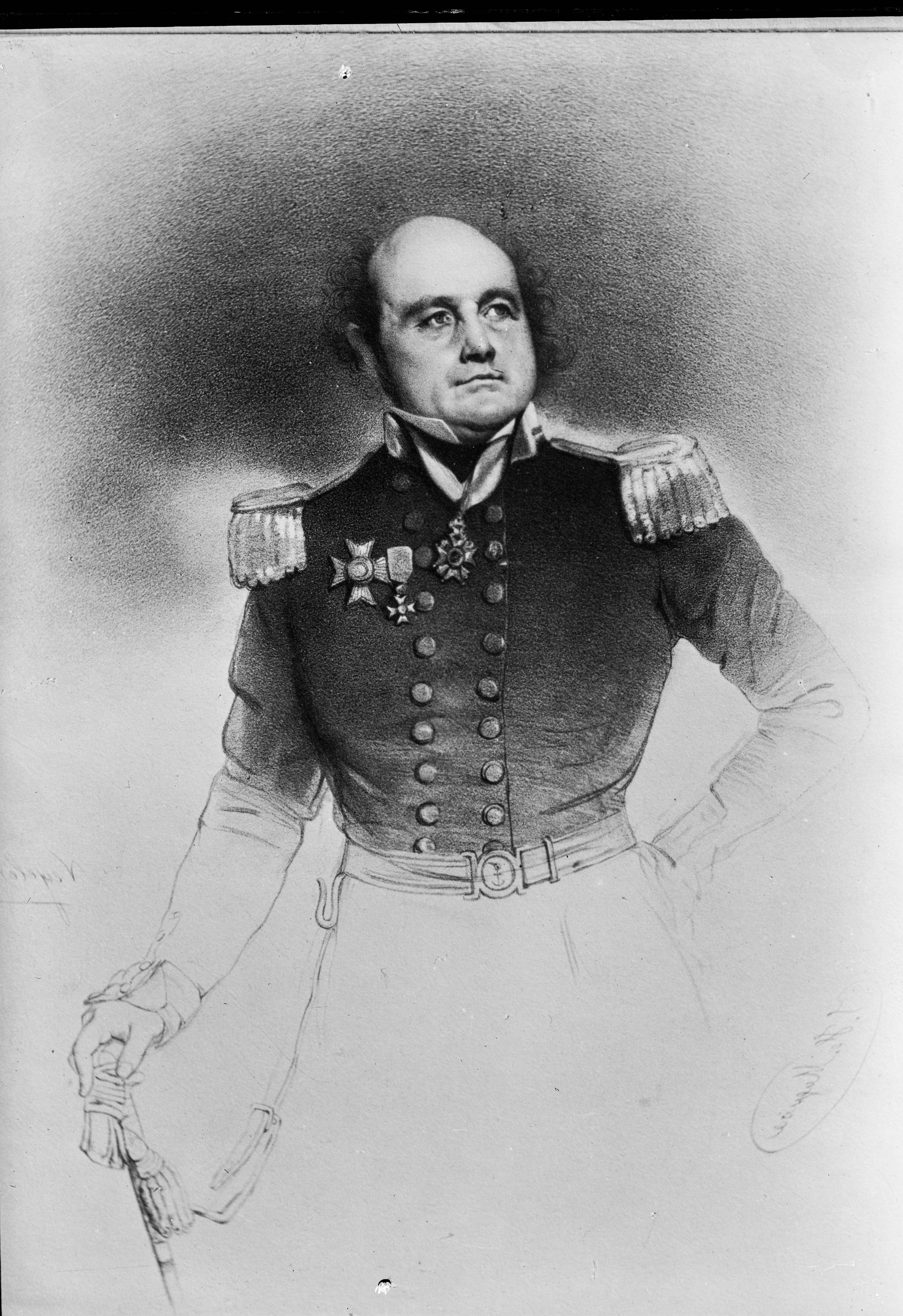Episode 305 - Bushrangers
Brady’s Lookout, West Tamar
This story came about because we were on a family getaway in West Tamar and stopped at Brady’s Lookout. This reminded me that we have a photo from there in the collection. The week after, I was delivering stock of our book “Convict Days of Port Arthur” to Port Arthur. The book sells like hot cakes and I’d lugged half a dozen boxes into the gift shop. On the way back, I saw “Pirates Lookout” on a sign and decided to take a detour. It turned out that the old Forestry road is rough, really rough. Much to the amazement of the local 4WD tribe, my little Hyundai made it and I was blessed with a spectacular view, which was of course another Beattie photo, this time Martin Cash Lookout. That got me thinking about bushrangers.
Tasmanian bushrangers, the gentleman bushrangers. These convict escapees supported a life on the run through theft and murder. Their names appear in Tasmanian place names as well as folk lore. Why do we remember serial killers so fondly?
I’ve seen & been to places around Tasmania named after bush rangers; Rocky Whelan’s Cave Mt Wellington, Brady’s lookout, Cash’s lookout etc. I want to know who these people were, what they did and why they are remembered with place names. Was Governor Arthur really the hero that got rid of them? How do you call someone a “gentleman bushranger” when they killed people? Was Port Arthur really the model modern prison or a hell hole? Were these convicts petty criminals, poor people and transported for next to no reason, or were they hardened serious criminals?
I turned to my friend, Reg Watson. He produced papers on dozens of bushrangers and a detailed description of their crimes, deeds and capture. We spoke at length and Reg kindly recorded a monologue on the topic. Reg described himself as a military historian, but his passion was clearly Tasmanian true crime. Sadly Reg passed away before I published the video.
This is how it turned out;
G’Day and welcome to Forgotten Tasmania.
391g – Cash’s lookout Eaglehawk Neck
This place is called Martin Cash Lookout and it overlooks Eaglehawk Neck near Port Arthur, Tasmania.
But by the time John Watt Beattie started making photographs like this in 1879, bushrangers like Martin Cash had already faded into legend and we had Martin Cash Lookout, Brady’s Lookout, Rocky Whelan’s Cave etc.
Who were they? What did they do? And, more importantly to me, why did we name places after them?
Martin Cash certainly drawn to look handsome.
Martin Cash was born in Ireland in 1808. By all accounts, his family was wealthy and teenage Martin did as he pleased, gambling, partying and pursuing women. In a fit of jealous rage, he shot and wounded a man and was transported to NSW where he was assigned to a work gang. He was unwittingly involved in a matter of stolen cattle, further extending his criminal record. He ran away to VDL, was caught and sent to the notorious Port Arthur Penitentiary.
429g
Port Arthur c1866
Cash ran away from a chain gang and climbed this hill. The view from here would have been really useful. He could see all the way around to the Blowhole at the end of Pirates Bay. Most importantly, he could see the guards and the dog line, blocking his escape via land, but he could see Eaglehawk Bay, and that’s where he swam to freedom.
Rumour had it that the waters here were infested with man eating sharks. I think it’d have to be a lost shark that’d come this far up the wrong way to open water, but the truth was that most convicts couldn’t swim anyway. Martin Cash made the crossing to begin his life as a bush ranger.
580g – Reward for Martin Cash poster 1843
He was known for not attacking women and only killing men when necessary. This earned him the label “gentleman bushranger”. He was caught several times and served time on Norfolk Island. He later became a constable, moved to New Zealand to run a brothel and eventually retired as a farmer in Hobart’s northern suburbs, where he passed away in 1877. In the Irish tradition, his coffin was displayed in at least two pubs before his burial at Cornelian Bay.
And even later in life, photo looks distinguished.
Ok, now I’m confused. Were the other bushrangers like that? Were they petty criminals and folk heroes? I think I need to talk to my friend and historian Reg Watson.
Reg Watson
In Tasmania, as is usual, we are very unique to the mainland in that what they call bolters really occurred even at the first settlement in 1803 at Risdon. A couple of the convicts, or prisoners they called them there, took to the bush, but they were soon apprehended. But from that example, it continued right to the 1850s. There wasn't just two or three groups of these Bushrangers. There were dozens and dozens at the same time. And it was a real problem for society. And just about everyone at one time, if they were outside the main centers, were plundered
736g
Governor David Collins 1804-1810
737g
Governor William Sorell 1817--1824
740g
Governor William Denison 1847-1855
738g
Governor John Franklin 1837-1843
S2635
Governor George Arthur 1824-1836
739g
Governor Eardley Wilmot 1843-1846
It was a problem for Collins, Governor Collins. It was a problem for Sorell. It was a problem for Denison. It was a problem for Franklin, was a problem for Governor Arthur, a problem for Eardley Wilmot. It was a real risk for the constables and the soldiers at the time. In Tasmania we haven't had a death of a policeman or a police personnel for 100 years by violent means. It wasn't the case in colonial times. 1843, for instance, two constables were killed, one by Martin Cash. And his name was Winstanley. And the other one was Thomas Smith, and that was by Samuel Britton. So two in one year. And when you look at the list of constables that have died through violent means the vast majority were within that 50 years.
From what Reg told me, the bushranger situation was more serious than the popular history might have us believe. To start with, VDL was a very different place in the early 1800s. It was less cleared and a lot less understood. The idea that First Nations people had lived here for maybe 100,000 years and must have been eating something, was totally lost on the British, who relied on British food, mostly shipped in or poorly farmed on this land perfectly evolved for growing native species. Communications were limited to line of sight semaphore or human messengers. The roads were very poor. If a horse could push through a bush track, they called it a road.
For the bushrangers, it was a constant search for food. They couldn’t live off the land, they had to take food from settlers who were remote and quite precarious. The settlers couldn’t afford anything to be stolen or they might starve.
The bushrangers plundered, stealing, murdering, raping and torturing. Those that only killed men were called “gentlemen bushrangers” – maybe that term has been distorted over the years? And that’s why we think they were heroes?
Looking at the reward poster and knowing about Gov Arthur’s oppressive regime, maybe Arthur was the common enemy? Or maybe we just like people sticking up for themselves?
The Hobart Gaol had a gallows that could hang 6 men at once. The very existence of such a device makes me shudder.
This cave on the mountain is named Rocky Whelan’s Cave.
Whelan was born about 1800 and transported to NSW for stealing in 1827. He was sent to Norfolk Island, involved in a mutiny and sent to Port Arthur in 1854 when the Norfolk Island prison closed. Whelan was then sent to a work gang in Hobart and promptly escaped to the hills of kunanyi/Mt Wellington, where he made this cave his home.
He raged a campaign of pillage and death until a passing constable recognised the boots Whelan had left outside a shop as belonging to Magistrate Dunn, who had been murdered. Whelan was captured and while awaiting the 6 man gallows, he confessed to at least 5 other murders.
We went looking for Dunn’s Creek. Allegedly, there’s a tree with an X carved in it to mark the spot, but I suspect the 1967 bush fires got that one. I’m not sure we found the creek either as the terrain has changed along Ridgeway with the development of the waterworks and the pipeline.
Whelan was clearly a nasty piece of work and a serial killer. He got a cave named after him and the most famous of his victims got a mere creek.
How about Matthew Brady?
Born Matthew Bready in 1799, he was transported to NSW for petty theft. After 350 lashes, he was sent to Sarah Island – the prison so bad that you had to sail through a place called Hell’s Gates to get to it.
Brady escaped in a whale boat and became a bushranger with James McCabe. We had ferries named after both of them on the Derwent after the Tasman bridge disaster.
2325 – Brady’s lookout
Brady was considered a gentleman who “rarely” robbed or insulted women. He shot at James McCabe and threw him out of the gang for trying to force a servant girl to kiss him.
Governor Arthur tasked Lieutenant William Gunn with the capture of Brady’s gang and offered a reward for Brady’s capture. Brady’s gang promptly went on the warpath and lay siege to the town of Sorell. They captured 36 men and locked them in the gaol. When they finally located Gunn, there was a fight and Gunn would later lose his arm as a result of injuries sustained. Governor Arthur upped the reward and Brady issued his own reward for capture of Governor Arthur. One of Brady’s gang turned informant and Brady was eventually captured by John Batman. He was sent to Hobart to be executed on the 6 man gallows with other bushrangers including Thomas Jeffries, who had been part of Brady’s gang until he was thrown out for molesting a woman. Jeffries had resorted to cannibalism. There were petitions to halt Brady’s execution, lest the gentleman be on the same scaffold as the cannibal. Brady received gifts to his cell including wine and fruit cake. In the end, they were all executed together.
Given Bready had started life as a respected servant and was only sentenced for petty theft, the case could be put that the system turned him into the criminal Matthew Brady.
It may be looked upon in these years gone by as a romantic life, but once they were captured they always said it was a dreadful life. You not only had to survive by getting the basics such as food, but you were always apprehensive of the authorities, the police and the constables searching for you. So it wasn't a pleasant life, but they chose it. They chose freedom over what was captivity in the prisons or on the chain gangs or wherever. It was a life of their choosing.
You can’t look at colonial era VDL, the British Army, police constables, courts, prisons, Port Arthur, convicts and bush rangers with a black and white approach. There was a lot of grey. Gentlemen bushrangers, bastard governors, rapist army officers and female bushrangers. A lot of racism, ignorance and lawlessness.
I’m leaning towards bush rangers being serial killers rather than folk heroes, but I still don’t know why we named places after them.
I do know that the story of Martin Cash’s capture is as gripping as any police drama on TV. And they named another place after him. To watch that story now, just click here.
All the Beattie’s digitised photos are on the web site
And there are displays of Beattie photos for sale at
Winnings Newsagency
317 Elizabeth Street
North Hobart
And
Sorell Antiques
15 Somerville Street
Sorell
Link to Dropbox where you will find Reg’s research papers on convicts;
https://www.dropbox.com/sh/33ak3x3ezzqzj79/AAA3s2BvvWr1YDeGxkiMsuAaa?dl=0
Thanks for reading,
Cheers!

















